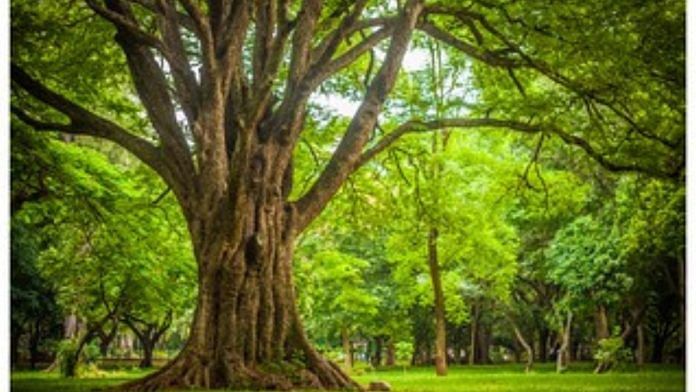- The SayTrees Foundation – created by a group of software engineers – is helping re-green the southern Indian city of Bengaluru.
- It has planted 480,000 saplings and is engaged in further nature-restoration projects.
- Beyond its specific activities, it hopes to instil a wider sense of responsibility towards nature among citizens.
In the heart of Bengaluru, once known as the City of Gardens, a silent war has been waged against nature.
As skyscrapers rose and urbanization took over the city in southern India, the green haven it once boasted began to wither away. Nature, and specifically trees, are critical for local communities to thrive, according to recent research from Crowther Lab at ETH Zurich.
In the face of this environmental crisis, a group of software engineers moonlighting as passionate tree lovers decided to reclaim the city and, in doing so, ignited a movement to be custodians of our planet. What started as a weekend pursuit run by ordinary people, the SayTrees Foundation, is a testament to the power of collective action and a beacon of hope for a greener future.
During the last monsoon alone, SayTrees planted over 95,000 saplings, not merely as a symbolic gesture, but as a tangible effort to empower communities to give back to nature. Their volunteers are a diverse tapestry of individuals from all backgrounds who have become the driving force behind its ambitious projects.
Have you read?
- Planting trees can help the climate, but only if we also stop burning fossil fuels
- The roots of sustainability: 5 reasons why cities need trees
- These are the 19 cities with the most trees
One such initiative involves extending their green thumb to schools outside the metropolis. Collaborating with schools in the city of Hosur, 40km south-east of Bengaluru, SayTrees has planted 1,200 trees and aims to reach the ambitious target of 10,000 in the coming months. Their methodology, the Miyawaki technique, is a testament to their dedication to sustainable practices. Planting native species such as Ficus religiosa, Ficus benghalensis, and Mangifera indica ensures not only rapid growth but also the preservation of the region’s biodiversity.
SayTrees’ deeper roots
SayTrees’ mission is not just about the trees; it is a rallying cry for citizens to volunteer their time to create greener, healthier cities. For seven years, they have tirelessly worked with individuals and corporate teams, fostering a vibrant community of tree lovers.
But this is just the beginning. SayTrees envisions a nationwide revolution, expanding their tree plantation drives to more cities and enlisting corporate teams to amplify the scale and impact of their efforts. In addition to their work on Miyawaki-based reforestation, SayTrees is a Restor partner, actively involved in restoring 145 sites covering a total area of 155 hectares in Karnataka and Andhra Pradesh states. Their commitment to environmental restoration, creating multi-layer plantations on degraded farmland, further underscores their holistic approach to building sustainable ecosystems.
SayTrees’ impact goes beyond the plants in the ground; it’s about instilling a sense of responsibility towards our environment in the hearts of citizens and corporations alike. It is not merely an organization; it is a movement, a force of nature determined to reclaim the green heritage that Bengaluru, and every city, deserves.
To date, the organization has planted approximately 480,000 saplings and established more than 80 dedicated plantation sites in and around Bengaluru. In one of SayTrees’ oldest sites in the northeastern neighbourhood of Krishnarajapuram, the Indian flap-shell turtle—an IUCN-vulnerable species—has found a new home.
In a world grappling with environmental challenges, SayTrees stands tall as a testament to the fact that change is possible when individuals unite with a shared purpose. So let’s all become custodians of our planet, sowing the seeds of change one sapling at a time.
This article previously appeared in the World Economic Forum.
Also read: Ram temple Surya Tilak was spectacular but the puffery around ‘science behind it’ wasn’t



